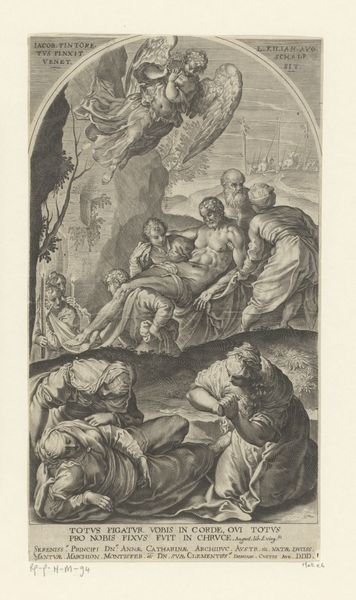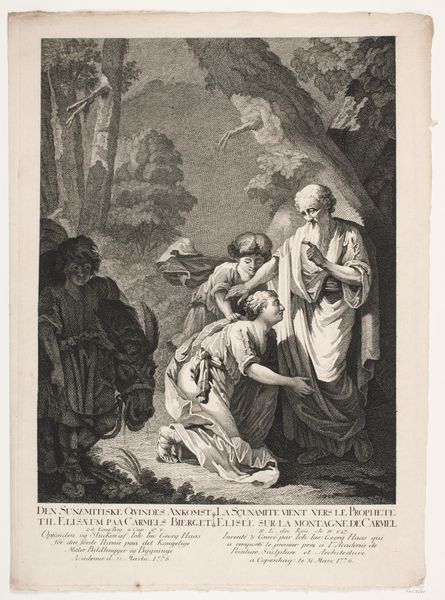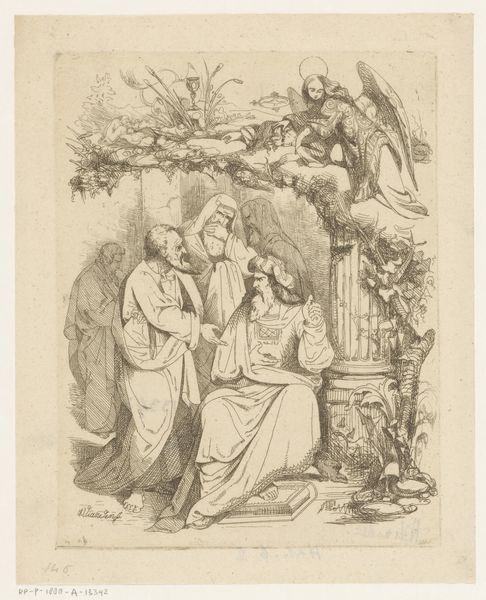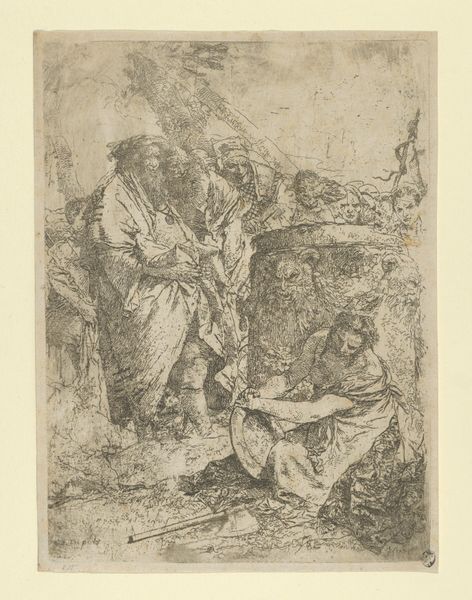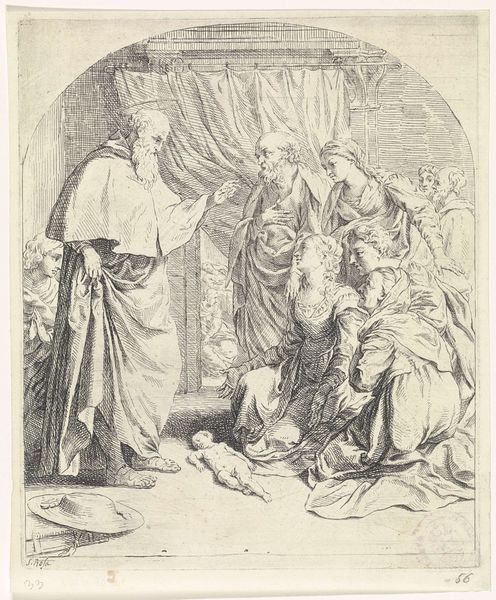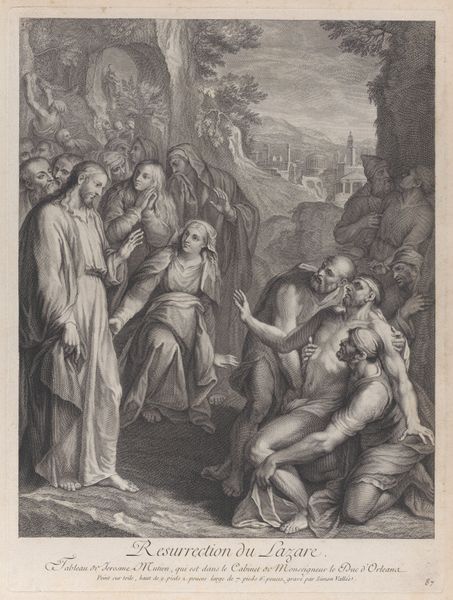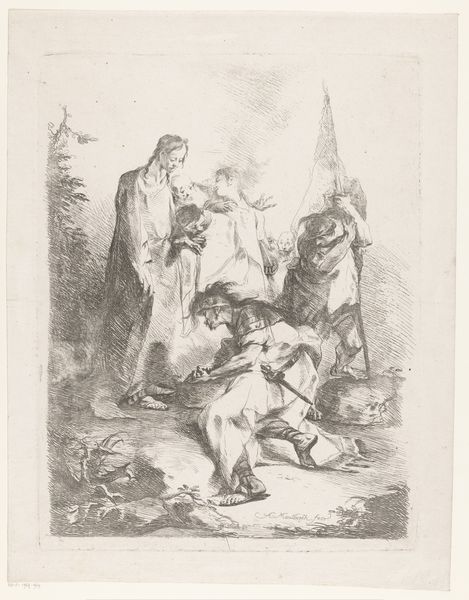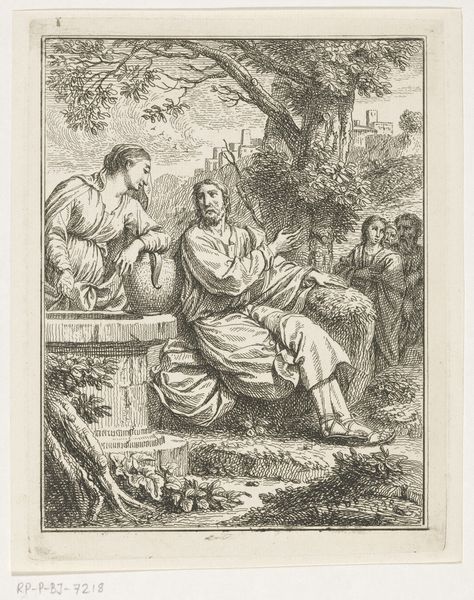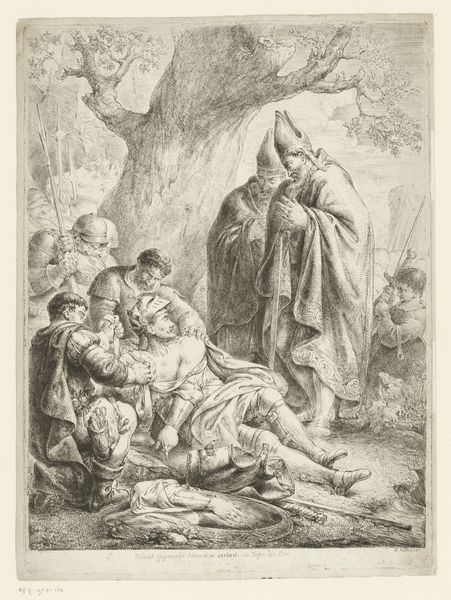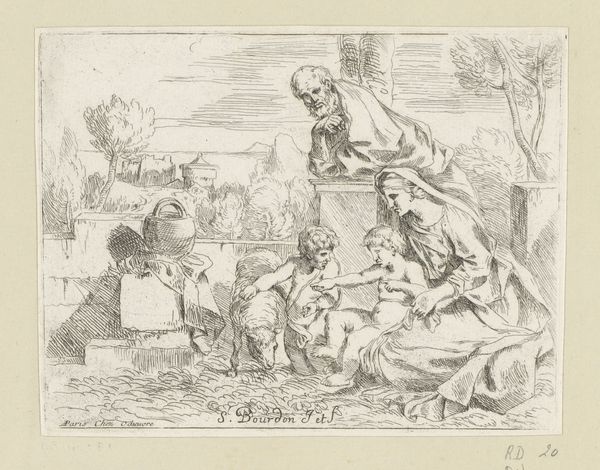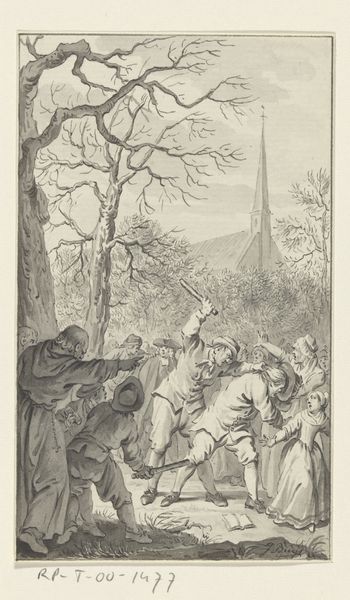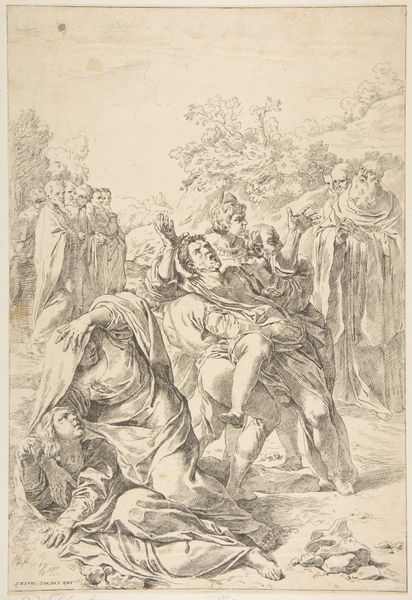
Saint Charles Borromeo Blessing the Plague-Stricken c. 1760
0:00
0:00
drawing, print, etching, paper
#
drawing
#
baroque
# print
#
etching
#
figuration
#
paper
#
history-painting
Dimensions: 555 × 377 mm (image); 615 × 396 mm (plate); 640 × 440 mm (sheet)
Copyright: Public Domain
Curator: Look at the way the artist, Jean Baptiste Marie Pierre, rendered this chaotic scene in Saint Charles Borromeo Blessing the Plague-Stricken. The print, dating to around 1760, is a remarkable example of etching, showcasing both detailed line work and dramatic composition. Editor: It strikes me as deeply unsettling, visually. The figures, especially the suffering, are so sharply etched. The looming architecture feels almost oppressive. It’s definitely evoking the somber atmosphere of the plague. Curator: Indeed. This artwork isn't just about the event itself; it reflects the broader socio-political anxieties of 18th-century Europe regarding disease and the Church's response. Saint Charles became a symbol of charity and unwavering faith in the face of overwhelming crisis. His image was deployed to inspire obedience and adherence to religious authority. Editor: Symbolically, the chalice he’s holding gains extra potency against the devastation surrounding him. You've got the dying and despair, contrasted against that single vessel and that cross in the background, promising hope. It speaks to the spiritual remedies sought against a very physical threat. Curator: Precisely! The piece’s visual drama is heightened through its stark depiction of the victims, their physical states, the architectural forms which serve to emphasize confinement and the divine instruments wielded against it, together constructing an ideological landscape as much as a physical one. It underlines what happens when public health measures were intertwined with social structures and ecclesiastical power. Editor: The fact that the print is reproducible gives it a unique power. It becomes a widespread emblem of not just Borromeo’s piety but a call to emulate that during times of suffering, widely circulating an image of resilience. The symbolic gestures become embedded. Curator: These mass reproductions provided potent, readily accessible imagery which reinforced specific ideals, essentially using art as a public service announcement in the name of order and religion. Editor: Seeing it with that historical framework in mind makes it more complicated, rather than just devotional. Thanks for sharing those insights. Curator: My pleasure. Thinking about it politically certainly shifts its resonance.
Comments
No comments
Be the first to comment and join the conversation on the ultimate creative platform.

